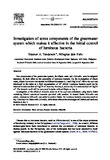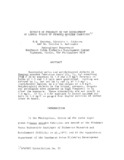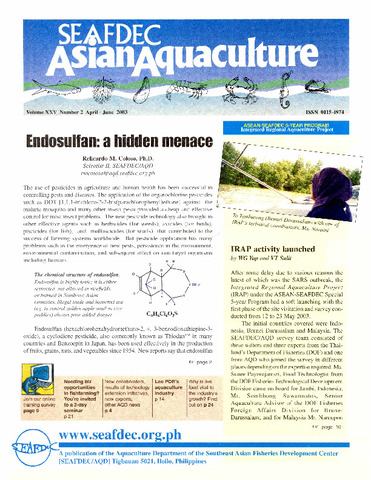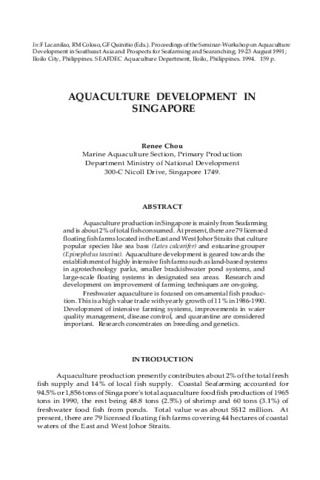Investigation of some components of the greenwater system which makes it effective in the initial control of luminous bacteria
Share
Abstract
Two components of the greenwater system, the tilapia water and Chlorella, were investigated separately for their effect on the population of luminous bacteria. For the investigation of tilapia water, Tilapia hornorum was stocked at different biomasses 0, 1 and 3 kg/10 m3. Vibrio harveyi was introduced to the tanks at a final concentration of 103 cfu/ml. Luminous bacteria could not be detected in tanks stocked at 3 kg/10 m3 from day 4 to day 6, and on day 6 in tanks stocked at 1 kg/10 m3. The bacteria could still be recovered in tanks without tilapia on day 6.
Investigation of the effect of chlorella alone on V. harveyi was undertaken using sterile flasks containing 500-ml autoclaved seawater provided with aeration. In treated flasks Chlorella was added, whereas no Chlorella was added to control flasks. No luminous bacteria were recovered on day 2 and day 3 in flasks with Chlorella, while those without the microalgae still harboured luminous bacteria at day 3.
Suggested Citation
Tendencia, E., & dela Peña, M. (2003). Investigation of some components of the greenwater system which makes it effective in the initial control of luminous bacteria. Aquaculture , 218(1-4), 115-119. https://doi.org/10.1016/S0044-8486(02)00524-0
Subject
Taxonomic term
Collections
- AQD Journal Articles [1249]
Related items
Showing items related by title, author, creator and subject.
-
Effects of furanace on the development of larval stages of Penaeus monodon Fabricius
Gacutan, Rogelio Q.; Llobrera, Alcestis T.; Baticados, Ma. Cecilia L. (Sea Grant College Program, Texas A&M University, 1979)Successful molts and morphological defects in P. monodon zoeae (Z1, Z2, Z3) resulting from a 24-h exposure to 1.0 and 2.0 mg/L furanace in baths of 1.0 and 2.0 mg/L were quantified. Molting ... -
Endosulfan: a hidden menace
Coloso, Relicardo M. (Aquaculture Department, Southeast Asian Fisheries Development Center, 2003)A clean and healthy environment is paramount to human existence. While pesticide use has successfully sustained agricultural and food production in our lifetime as well as safeguarded human health by controlling insect ... -
Aquaculture development in Singapore
Chou, Renee. (Aquaculture Department, Southeast Asian Fisheries Development Center, 1994)Aquaculture production in Singapore is mainly from Seafarming and is about 2% of total fish consumed. At present, there are 79 licensed floating fish farms located in the East and West Johor Straits that culture popular ...




